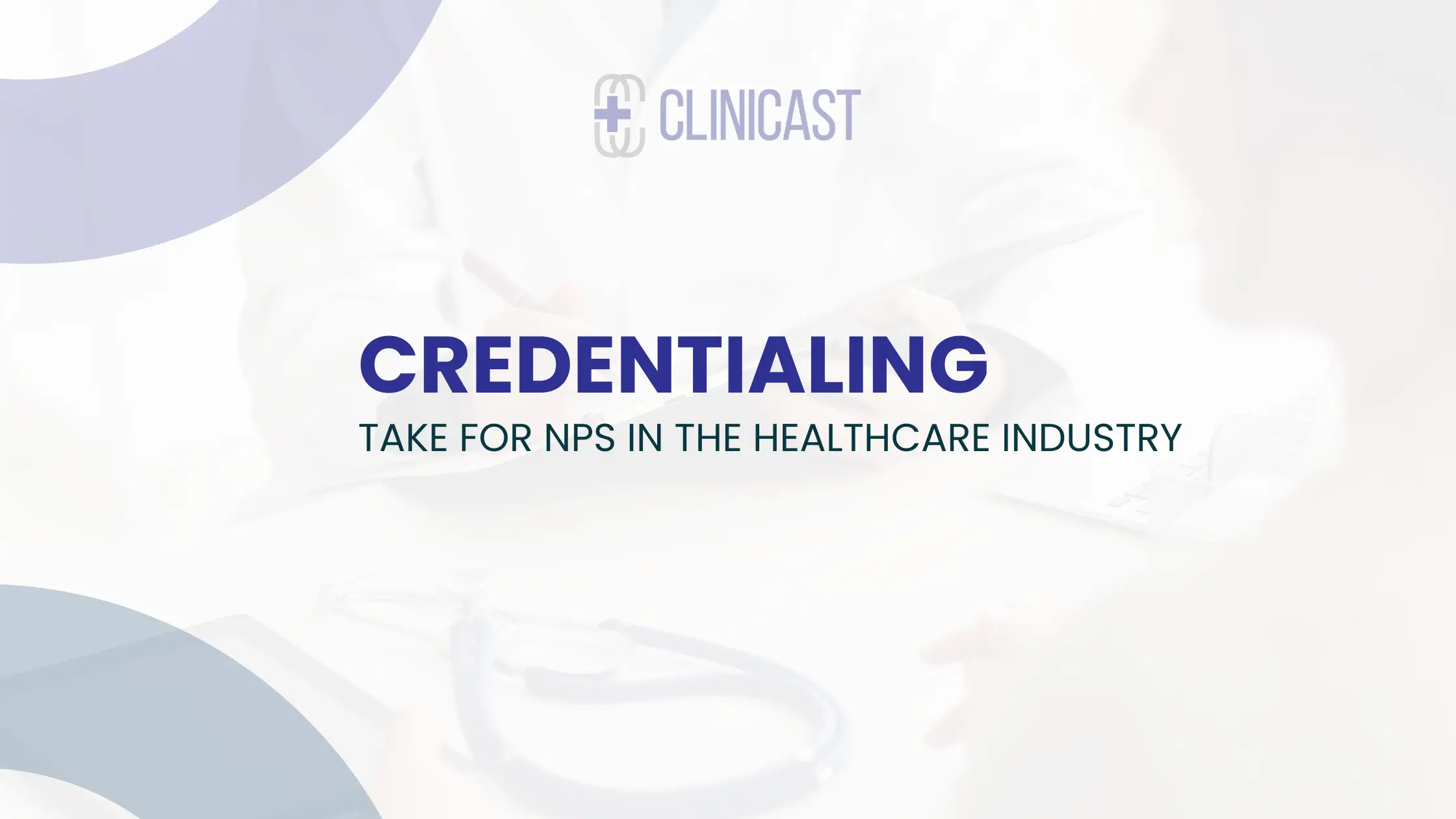One of the most common questions that come to a practitioner’s mind when they are going through credentialing is, “How long will the credentialing take?” The answer to this question is not as straightforward as it may look. The time frame for credentialing, either NP credentialing or physician credentialing, depends on multiple factors, including the field of the practitioner, the experience, the number of certifications, academic qualifications, and the turnaround time for credentialing can vary.
Credentialing is a critical process ensuring healthcare professionals meet the qualifications and standards to provide safe and effective care. Nurse Practitioners (NPs) are advanced practice registered nurses who play a crucial role in the healthcare system.
Keep learning as we explore the different types of credentialing and provide detailed information about NP credentialing later in the article.
NP Credentialing and its types

NP Credentialing and its types
As credentialing ensures all the education and certifications are
Education Credentialing:
Education credentialing is the initial step in the NP credentialing process. NPs must complete an accredited nursing program and obtain a Bachelor of Science in Nursing (BSN) degree. This typically takes four years. Afterward, they must pursue a Master of Science in Nursing (MSN) or a Doctor of Nursing Practice (DNP) degree, which usually takes an additional two to four years. The duration of this phase depends on the individual’s educational pathway and the program’s requirements.
Certification Credentialing:
After completing their formal education, NPs must obtain national certification in their chosen specialty area. Organizations such as the American Nurses Credentialing Center (ANCC) and the American Academy of Nurse Practitioners Certification Board (AANPCB) offer certification exams for NPs. The preparation for these exams can take several months, including studying and reviewing courses. Once certified, NPs can proceed with the next steps in the credentialing process.
State Licensure Credentialing:
Apart from regular academic education, NP credentialing also involves obtaining a state license to practice. The requirements for state licensure may vary, but they typically include submitting an application, providing proof of education, certification, and passing a state-specific or national certification exam. The duration for the submission of all the documents and requirements varies from one state to another, but it usually takes several weeks to a few months to complete.
Institutional Credentialing:
Institutional credentialing is the final step in the NP credentialing process. NPs must undergo credentialing by the healthcare facility or organization where they wish to practice.
This involves submitting a detailed application and providing documentation of education, certification, licensure, malpractice insurance, and professional references. Once the required documents are shared, the healthcare facility then verifies the NP’s credentials, conducts background checks, and evaluates their qualifications. The timeframe for institutional credentialing can range from a few weeks to several months, depending on the organization’s internal processes.
NP Credentialing:
NP credentialing is a comprehensive process that combines all the aforementioned types of credentialing. The duration of NP credentialing can vary significantly based on individual circumstances and external factors. On average, the entire process from education to institutional credentialing can take anywhere from six months to over a year.
Factors influencing NP Credentialing timeframes:
Like any other credentialing, NP credentialing also suffers from operational hurdles. Here are some common factors to discuss;
- Documentation and Paperwork: The time taken to gather and submit the required documentation can significantly impact the overall credentialing timeline. Ensuring all necessary paperwork is complete, accurate, and up to date is crucial to expedite the process.
- Organizational Processes: Different healthcare facilities and organizations have varying credentialing procedures. Some may have streamlined processes and dedicated staff, while others may have complex systems that cause delays. NPs should familiarize themselves with the specific requirements and processes of the institutions they are applying to.
- State Regulations: Each state has its own regulations and requirements for NP credentialing. NPs should research and understand the specific licensing requirements and procedures of the states they wish to practice in. Some states have more efficient processes, while others may have lengthier timelines due to higher volumes of applicants.
- External Factors: External factors, such as holidays, staff availability, and unforeseen circumstances, can also influence the credentialing timeline. NPs should remain proactive and communicate regularly with the relevant organizations to ensure a smooth and timely process.
Conclusion
Obtaining NP credentials is vital for nurse practitioners to practice their profession and provide high-quality care to patients. The duration of NP credentialing can vary depending on factors such as education, certification, state licensure, and institutional credentialing. While the process can take several months to over a year, staying organized, proactive, and well-informed about the requirements and procedures can help NPs navigate the credentialing process more efficiently. NP credentialing is an investment in professional development that ensures patient safety and upholds the standards of nursing practice.


